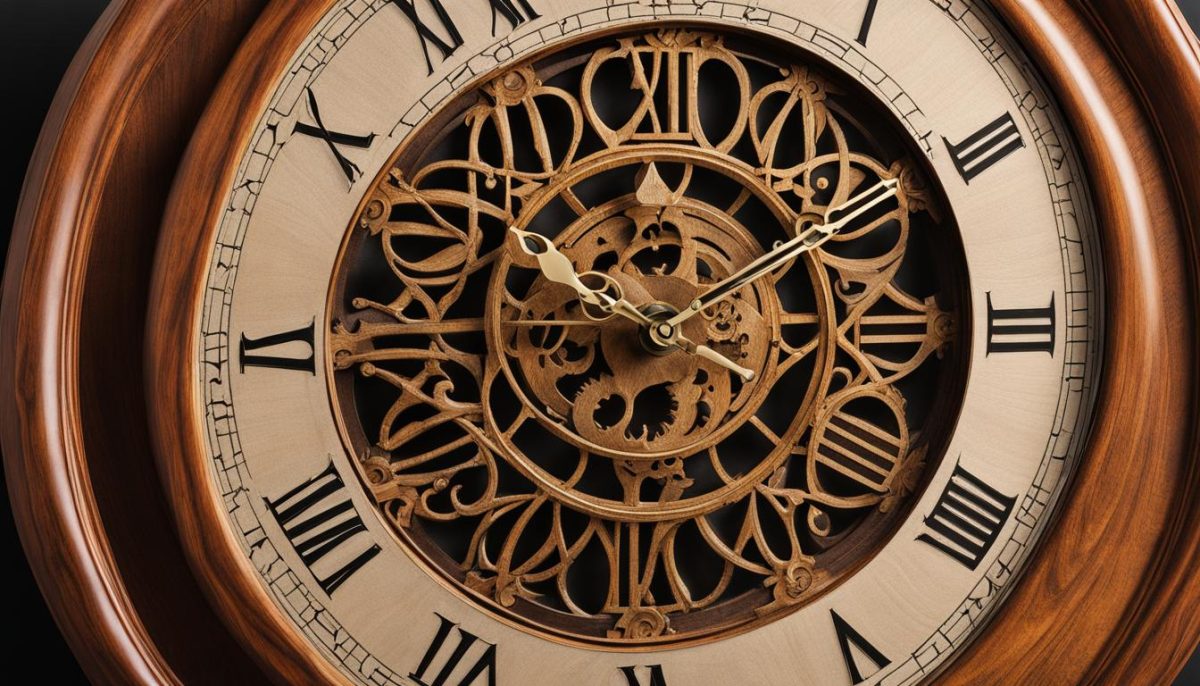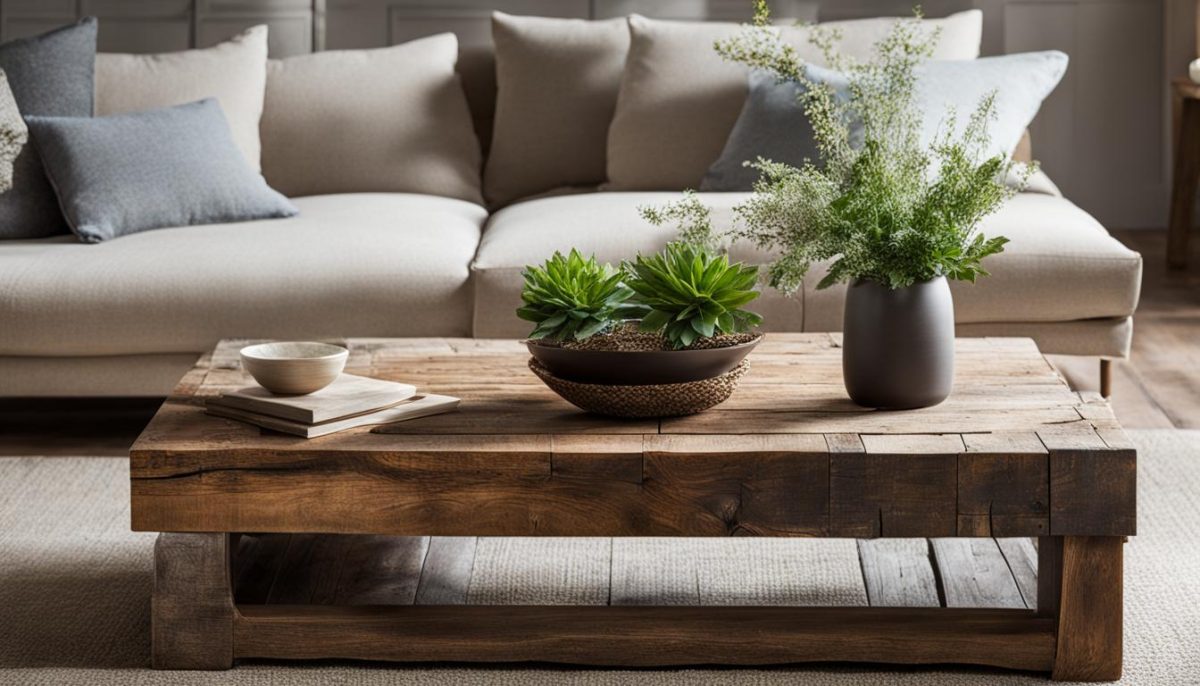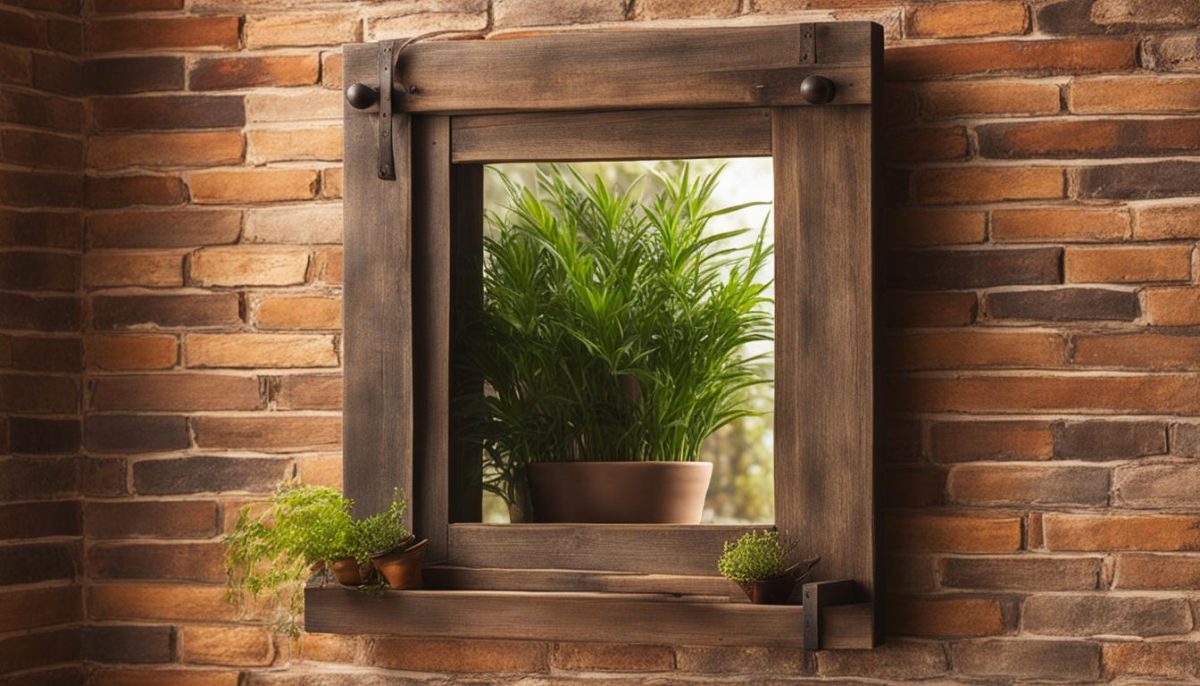Imagine walking into a room where a statement piece draws your eye—a piece where utility and aesthetics merge effortlessly. We’re talking about an elegant wood wall clock, a discerning choice for both traditional and contemporary interiors. Not only does it keep you punctual, but it also embodies functional wood clock art that elevates the decor of any space.
With an array of designs from Farmhouse to Mid Century Modern, these large wall clocks manifest as more than mere timekeepers; they become an expression of taste and individuality. Variations in wooden aesthetics—from the rustic charm of Hickory to the refined grains of Maple and Walnut—invite personalization that resonates with your style.
The allure of these timepieces is palpable, hinting at a range of large wall clock decor options that are designed to make a bold statement in your living room, dining area, or any part of your home craving a touch of natural elegance. Indeed, these wall clocks are not just functional—they’re a celebration of craftsmanship and timeless design.

A close-up view of a large wood wall clock, showcasing the intricate details and craftsmanship of the elegant design. The natural wood grains are highlighted by the soft light filtering in from a nearby window, adding warmth and depth to the image. The clock hands are set at 12 o’clock, symbolizing the timeless and classic nature of this functional art piece.
Understanding the Heft of Your Wood Wall Clock
When it comes to enhancing your living space with a durable large wood clock, appreciating the nuances associated with wall clock weight is essential. Not only does the clock serve as a practical timepiece but it also plays a vital role in the aesthetic dynamics of interior design. Whether opting for an open-faced variant or a handsomely framed piece, acknowledging the clock’s heft becomes a prerequisite for secure clock mounting and seamless integration into your décor.
The Weight of Open-Faced and Framed Wall Clocks
The variance in weight between open-faced and framed wood wall clocks can greatly influence the approach for wall clock installation. The sturdier and heavyweight nature of framed clocks often makes them the focal point of a room, whereas open-faced clocks provide a more subtle addition to a space. To ensure seamless integration, we must consider not only the weight but also the overall dimensions these clocks bring to our homes.
- 12-inch Open-Faced Clock: ~3 lbs
- 18-inch Open-Faced Clock: ~6 lbs
- 30-inch Open-Faced Clock: ~15 lbs
- 12-inch Framed Clock: ~4 lbs
- 48-inch Framed Clock: ~35 lbs

Create an image of a large wood wall clock that emphasizes its sturdiness and durability. Focus on the weight and heft of the clock, using deep shadows to emphasize its solid construction. Incorporate elements of natural wood texture and color, highlighting the intricate grain and knots in the wood. Use angled perspectives and close-up angles to showcase the clock’s size and weight, and avoid any playful or whimsical elements, focusing instead on a straightforward portrayal of a dependable timepiece.
Choosing the Right Spot for Your Clock Based on Weight
Identifying the ideal clock placement is a strategic aspect of interior design that complements secure clock mounting and stability. The areas selected for these statement pieces should be resilient enough to support the clock’s weight, be easily viewable, and coexist with the existing design elements. Beyond aesthetics, the functional integrity of the clock and the wall must be maintained with a mindful approach to mounting.
- Lightweight Clocks (12 to 18 inches): Suitable for a variety of wall spaces
- Heavyweight Clocks (up to 60 inches): Require sturdy support systems
By giving thorough attention to these aspects, not only do you preserve the structural quality of both clock and wall, but you also optimize the integrity of your interior design framework. Remember to incorporate the following interior design tips for an end result that’s as reliable as it is visually impressive:
- Assess the wall strength for heavy clocks
- Pick a strategic location for visibility and balance
- Use high-quality mounting hardware for longevity
Wood Wall Clock Power Sources: Ensuring Long-Term Timekeeping
When it comes to the impeccable timekeeping of large wood wall clocks, one critical aspect is the power source driving these sophisticated timepieces. A reliable and energy-efficient battery not only helps maintain accurate time but also ensures that your elegant wood wall clock remains an enduring treasure. The preferred battery type for these decorative yet functional wood clock art pieces is the humble AA, known for its wide availability and convenient size.
Navigating Battery Choices for Different Sized Clocks
Different sized clocks require consideration in terms of the power needed to ensure their smooth operation. While smaller wood clocks comfortably run on the standard AA battery, it’s particularly important for larger clock energy efficiency that a suitable battery with sufficient voltage is chosen. This becomes even more essential when incorporating additional mechanisms, such as a second hand that demands constant, steady movements. In such cases, clock battery life is a key factor to consider when selecting a suitable AA battery clock, as this determines how frequently you’ll need to replace the power source.
The Lifespan of Lithium Batteries in Large Clocks
For long-lasting clock batteries that promise reliable timekeeping, lithium batteries are a top choice. Their extended lifespan is a boon for large wood wall clocks, which may require more substantial energy to manage the weightier hands. With large clock hands, having a steady and enduring energy supply is essential for maintaining the precision of the clock’s movements. Energy-efficient wall clocks, powered by lithium batteries, demand fewer battery changes, reinforcing the seamless integration of these exquisite functional art pieces into your lifestyle with minimal maintenance.



